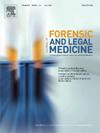滥用赛拉嗪,风险与日俱增:回顾其在美国和波多黎各的影响、激增的使用量和相关死亡事件。
IF 1.2
4区 医学
Q3 MEDICINE, LEGAL
引用次数: 0
摘要
近十年来,新出现的滥用药物异丙嗪加剧了阿片类药物过量的流行。这种兽用麻醉剂是一种α-2受体激动剂,不仅会增强阿片类药物的致命作用,还会对内皮产生毒性影响。本综述旨在评估作为公共卫生问题的阿片类药物危机背景下使用和过量使用甲苯噻嗪的影响。研究使用的数据来自科学出版物、州卫生报告以及波多黎各法医科学研究所的分析。在 PubMed、Google Scholar 和 Scopus 等数据库中搜索了相关出版物。搜索策略采用了两组术语:相关药物(异丙嗪)和接触类型(吸毒、用药过量、药物滥用等)。然后对 PubMed 中的初始搜索进行推断,并根据适当的数据库语法对搜索条件进行调整。根据最新的出版物和美国疾病预防控制中心的数据,约 95% 的芬太尼过量病例涉及到异丙嗪,而另外 5% 的过量病例仅归因于异丙嗪,主要是静脉注射。在过去四年中,有 4000 多例过量死亡病例与使用异丙嗪有关;美国东北部报告的死亡病例数量最多。随着重新分析结果和新数据的公布,这一数字每天都在变化。只有不到 50% 的州进行了二甲肼检测或对与该药物有关的过量使用进行了统计监测。缺乏检测阻碍了急诊室医生做出准确诊断,增加了过量用药致死的可能性。本综述强调了五个主要关注点:(1)认识到中毒是首要关注点,以及无法使用α-2 拮抗剂进行治疗。(2) 异丙嗪滥用及其与芬太尼及其类似物等物质联合使用给临床带来的挑战。(3) 有必要建立强大的政府统计资源,以统一和传播重要的药物过量和新出现的药物滥用检测信息。(4) 需要有效的康复计划,包括社会心理支持和治疗干预,以应对这一公共卫生危机。(5)迫切需要开展进一步研究,以了解甲氧苄啶的流行率、长期或急性使用的毒性作用以及对甲氧苄啶使用者的临床影响,包括开发用于治疗的α-2拮抗剂。我们的结论是,解决这些问题对于应对甲氧苄啶滥用情况至关重要。本文章由计算机程序翻译,如有差异,请以英文原文为准。
Xylazine abuse, the growing risk: A review of its effects, upsurge use and associated fatalities in the USA and Puerto Rico
In the last decade, the opioid overdose epidemic has been exacerbated by the emerging drug of abuse, xylazine. This veterinary anesthetic, an alpha-2 agonist, not only potentiates the fatal effects of opioids but also causes toxic endothelial effects. This review aims to assess the impact of xylazine use and overdoses within the context of the opioid crisis as a public health issue. The research used data from scientific publications, state health reports, and analyses from the Institute of Forensic Sciences of Puerto Rico. The databases PubMed, Google Scholar, and Scopus were searched for relevant publications. The search strategy employed two groups of terms: the drug of interest (xylazine) and types of exposure (drug use, overdose, substance abuse, etc.). The initial search in PubMed was then extrapolated, and the search terms were adjusted for appropriate database syntax. According to the most recent publications and CDC data in the USA, approximately 95 % of fentanyl overdose cases involve xylazine, while the other 5 % of overdose cases are attributed solely to xylazine, predominantly administered intravenously. In the last four years, more than 4000 overdose deaths have been related to xylazine use; the northeastern United States had reported the most significant number of deaths. This number changes daily as reanalysis results and new data are published. Less than 50 % of states perform tests for xylazine detection or maintain statistical monitoring of overdoses related to this drug. The absence of testing impedes emergency room physicians from making accurate diagnoses, increasing the likelihood of fatal overdoses. This review highlights five major concerns: (1) The recognition of intoxication as a primary concern and the unavailability of alpha-2 antagonists for treatment. (2) The challenges in the clinical setting linked to xylazine abuse and its co-administration with substances like fentanyl and its analogs. (3) The necessity for robust government statistical resources for the unification and dissemination of critical overdose and emerging drug abuse detection information. (4) The need for effective rehabilitation programs, including psychosocial support and treatment interventions, to respond to this public health crisis. (5) The urgency for further research to understand the prevalence, toxic effects of chronic or acute use, and the clinical implications in xylazine users, including the development of alpha-2 antagonists for treatment. We conclude that addressing these concerns is crucial to working with the xylazine abuse situation.
求助全文
通过发布文献求助,成功后即可免费获取论文全文。
去求助
来源期刊

Journal of forensic and legal medicine
MEDICINE, LEGAL-
CiteScore
2.70
自引率
6.70%
发文量
106
审稿时长
57 days
期刊介绍:
The Journal of Forensic and Legal Medicine publishes topical articles on aspects of forensic and legal medicine. Specifically the Journal supports research that explores the medical principles of care and forensic assessment of individuals, whether adult or child, in contact with the judicial system. It is a fully peer-review hybrid journal with a broad international perspective.
The Journal accepts submissions of original research, review articles, and pertinent case studies, editorials, and commentaries in relevant areas of Forensic and Legal Medicine, Context of Practice, and Education and Training.
The Journal adheres to strict publication ethical guidelines, and actively supports a culture of inclusive and representative publication.
 求助内容:
求助内容: 应助结果提醒方式:
应助结果提醒方式:


